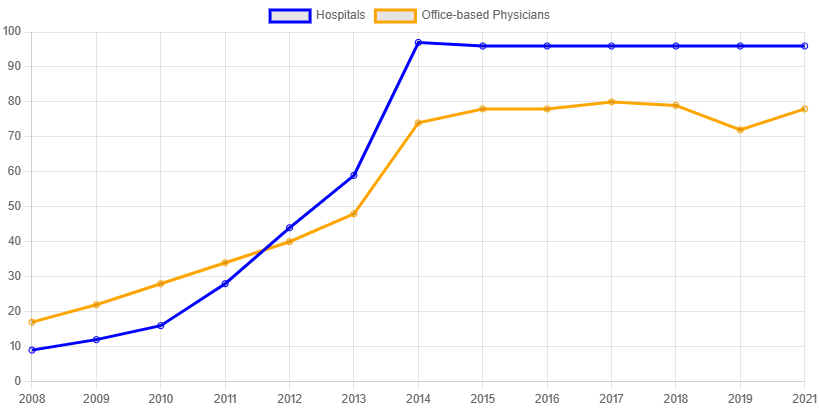Author: Sonia Galvan
The health IT market is constantly changing, with new entrants emerging daily, established solutions adapting to meet market demand, and regulatory updates affecting many, if not all, stakeholders. Given the broad responsibilities developers and product managers have, it’s understandable some may be unaware of existing or evolving mandates that apply to them. Whether you have a new or soon-to-be-released product, recently modified software, or find yourself newly subject to certification requirements, understanding the ONC Health IT Certification Program is essential.
Certification ensures compliance with federal regulations but also provides significant benefits. Let’s explore why certification is crucial for your health IT software and how it can help you succeed in the competitive healthcare market.
Why Pursue ONC Health IT Certification?
- Compliance with Federal Regulations
Certification ensures that your health IT software meets the stringent criteria established by the U.S. Department of Health and Human Services (HHS). This compliance helps you avoid potential fines and helps develop market trust. - Increased Demand by Supporting Eligibility for Incentive Programs
ONC Health IT Certified software helps healthcare providers qualify for CMS and Medicare incentive programs, such as the Promoting Interoperability Programs for Hospitals or the Merit-based Incentive Payment System (MIPS). Your existing and prospective customers can avoid payment disincentives (-9%) and gain payment incentives (+9%) when they use Certified Electronic Health Record Technology (CEHRT). - Enhanced Interoperability
In the increasingly modular health IT world, hospitals and physician offices frequently use multiple technologies that rely on certification standards for interoperability. They also recognize that patient mobility between various care settings among providers depends heavily on shared interoperability standards that come from the ubiquitous use of certified health IT across the US healthcare community. Certification ensures your health IT software can effectively exchange information with other systems, enhancing interoperability. This capability is crucial for coordinated care and efficient information sharing across various healthcare settings, ensuring your software meets these critical standards. - Improved Patient Safety and Care Quality
Certified health IT products meet rigorous standards for functionality, security, and usability. Certification ensures your software supports high-quality patient care and safeguards patient information, making it a trusted choice for healthcare providers focused on patient safety and care quality. - Access to Federal Contracts and Grants
Certified health IT products are often prerequisites for federal and state contracts or grants, such as those from the VA or community mental health initiatives in New York. Additionally, private payers increasingly require certified technology for approval as an in-network provider, aligning with CMS standards. - Market Competitiveness
Certification can enhance your reputation and credibility in the market. Healthcare providers are more likely to trust and adopt certified health IT products, giving you a competitive edge. Certification signals that your software meets the highest industry standards in a market where trust and reliability are paramount. - Support for Public Health Reporting
Certified Health IT products often include functionalities that support public health reporting requirements. This capability is crucial for aiding in public health surveillance and response efforts, particularly during health crises like the COVID-19 pandemic. Certification ensures your software can contribute to these vital public health initiatives. - Facilitation of Patient Engagement
Certified Health IT systems often include features that promote patient engagement—such as patient portals and secure messaging, which are vital for meeting patient-centered care goals and improving outcomes. - Alignment with National Health IT Priorities
Certification aligns your Health IT products with national priorities and goals set by the ONC, such as advancing health equity, improving data interoperability, and promoting patient access to health information. By obtaining certification, your software supports these critical national health IT objectives. - Risk Mitigation
Certification helps mitigate software development and deployment risks by ensuring your products meet established security, privacy, and performance standards. This can reduce the likelihood of security breaches and system failures, providing peace of mind for you, your customers, and patients.
Is the ONC Health IT Certification Program Right for You?
To determine if the ONC Health IT Certification Program is applicable to your software, consider the following scenarios:
New Products: If you are developing a new health IT product, obtaining certification can ensure it meets mandated criteria and standards from the outset, providing a strong foundation for market entry. Roughly 95% of US hospitals and 80% of physician practices use ONC Health IT Certified technology—it has become a de facto baseline for the US market.
Source: ASTP – American Hospital Association (AHA) Annual Survey.
Recently Modified Software or Expanded Criteria: If your existing software has been updated to include expanded functionality, or if criteria is updated or expanded to include functionality that your software provides, it may now be eligible for certification.
Previously Exempt Software: Certification is essential if your client’s exemption status under CMS has changed. For example, health IT developers who serve niche healthcare providers like physical and occupational therapists, clinical psychologists, registered dieticians, speech-language pathologists, and other specialized healthcare environments were impacted recently as their customer’s exemption from having to use ONC Health IT certified software was recently eliminated from the CMS “Promoting Interoperability” requirements.
The ONC Health IT Certification Process
Understanding the certification process is crucial for planning and resource allocation. The ONC Health IT Certification Program involves several steps:
Initial Certification
- Step 1: Preparation
Review the certification criteria and ensure your software meets the required standards. (Learn more about Drummond ONC Health IT Testing and Certification service) - Step 2: Application
Submit your application to an ONC-Authorized Testing Lab (ONC-ATL) and ONC-Authorized Certifying Body (ONC-ACB). (Click here to register to start our ONC Health IT Certification journey) - Step 3: Testing
Your software undergoes rigorous compliance review and testing to verify compliance with ONC standards. (Meet the ONC Health IT Approved Testing Lab and Approved Certification Body Teams) - Step 4: Certification
Upon successful testing, your software receives certification, allowing it to be listed on Drummond’s Certified Products List as well as the Certified Health IT Product List (CHPL).
Quarterly Attestations
Certified products must submit quarterly attestations to demonstrate ongoing compliance with ONC requirements. This process ensures that your software continues to meet the necessary standards and remains in good standing.
Updates
The ONC regularly updates certification requirements to reflect new standards and regulations. Changing certification requirements may necessitate additional product updates, testing, or self-attestation. Certification must be maintained and is not a one-time effort.
Timeline
The timeline for obtaining ONC Health IT Certification varies depending on the complexity of your software and your readiness for testing. Generally, the process can take a few months, including preparation, application, testing, and certification. It’s important to plan for and allocate sufficient resources for each stage to ensure timely certification.
Final Thoughts
For Health IT developers, obtaining ONC Health IT Certification is a strategic move that offers numerous benefits. From regulatory compliance and market competitiveness to enhanced interoperability and patient safety, certification provides a robust framework for delivering high-quality Health IT solutions. By understanding the certification process and its significance, you can position your software to meet the evolving needs of the healthcare industry and contribute to national health IT goals.

